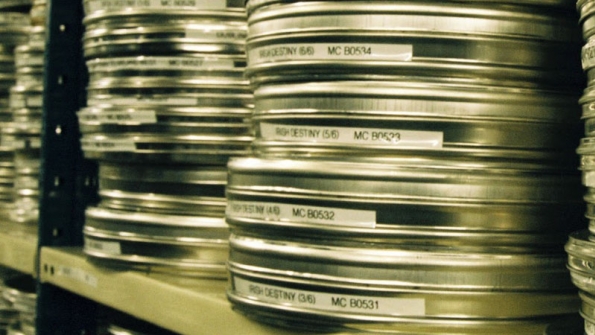The Challenge of Managing Archives
In the broadcast industry, archive footage fills an important role by allowing broadcasters and media production companies to build previous content into new programs and create more compelling stories to connect with their audiences. We see this regularly with sports coverage, for example, where broadcasters use clips from previous events or games to help build excitement, provide context and create a narrative that the audience can buy into. Over several years, broadcasters can build up an extensive library of assets and video, which if not managed properly, can cause a major headache. Often, this stems from the fact that they experience significant challenges when trying to access archive footage, which is saved in different places across disparate systems, making it difficult to find specific clips.
A FRAGMENTED UNIVERSE

For broadcasters, it’s common to have a number of facilities across multiple locations, particularly within live broadcast, which can see a number of OB vans in use across several locations. While this may be conducive to creating new content, the use of ineffective databases can make it difficult to share content with individuals across these many locations. As a result, it may not be possible to find specific pieces of footage when needed. This can cause further problems, either due to the fact that the content will have to be recreated at an extra expense or because the video is impossible to recreate, which will be the case if it’s from a live sporting event, for example. Problems are also encountered when content is stored in different places by different users. Therefore, if an employee leaves the organization, they may take the knowledge of where assets are located with them.
Yet, this is just one part of the issue, and it is only going to get worse as broadcasters’ content libraries continue to grow. A major challenge of having such a large back catalogue is trying to find material once it has been stored—after all, how do you organize thousands of hours of footage and how can you then locate the exact clip you need? For instance, tracking down a clip from the 1996 Olympic Games can become a huge undertaking. Consequently, it is vital that broadcasters find a solution that allows them to easily store, label and share content, overcoming these complications and reducing time and effort spent locating collateral.
LOOKING TO THE CLOUD
In order to resolve the current dilemma broadcasters are facing, they must look to implement a more robust cloud-based solution that will ensure their digital assets are not only protected but also reusable for the future. This will be a low-risk, high-reward operation, which will enable them to safely store their content, but also share it internally across any number of their locations. By alleviating themselves of ineffective databases and the practice of storing items across disparate locations, these organizations stand to see significant benefits, many of which will be realized immediately, such as the ability to easily search for and find any video.
By using a single content management platform, broadcasters also open themselves up to the opportunity to monetize their video. As proven by almost all major broadcasters, a wealth of historic program stored online creates the potential for VOD services. This is something that we have seen with HBO and the creation of its on-demand service HBO Now for its treasure trove of TV shows. This development was the result of the digitization of existing content spanning many years. While the majority of broadcasters won’t have as wide-ranging a library, moving to a single, digitized catalogue of content creates the opportunity to develop new revenue streams.
The professional video industry's #1 source for news, trends and product and tech information. Sign up below.
Implementing a digital solution may also give broadcasters the push to digitize any content that currently only exists in hard copies on film or video. This is something most of us can relate to in our personal lives, with old photo albums or video tapes from our childhoods stored thoughtlessly in shoeboxes or at the back of a wardrobe. But, when we think about the value, even if just sentimental, of these items, most of us would be willing to pay for a cloud solution to allow us to store digitized versions in one place and gain assurance about its long-term security. This is something that is mirrored by broadcasters but on a much larger scale and with a much higher price tag attached to the content. For broadcasters, physical assets are far more likely to get lost, damaged or destroyed, and if they exist only in this format, they are irreplaceable. As such, moving to a cloud-based solution presents broadcasters with the capacity to digitize any archive footage that currently exists solely on film or video, ensuring that it is secure and allowing them to scale as their collection expands.
As the amount of older material broadcasters and media companies must store increases, the size and scale of the headache they are dealing with will grow in tandem. Organizations that fail to address the challenge of storing existing content will only see the problem worsen and will feel the effects on the quality of their output. However, broadcasters that act now and implement a new solution will benefit from a system that makes it easier for their entire organization to access and share content in order to create more compelling viewing experiences, as well as the potential to open up new revenue streams.
Tim Jobling is the CTO for Imagen.
